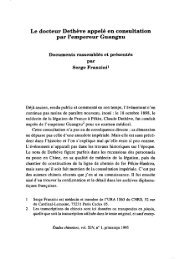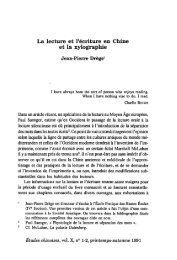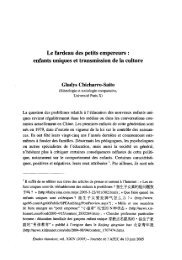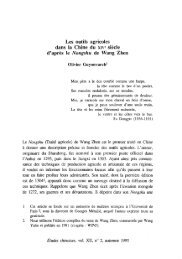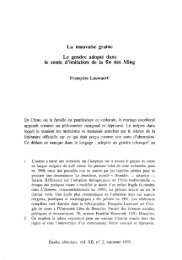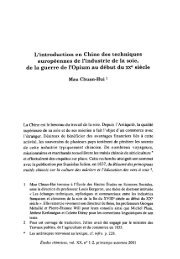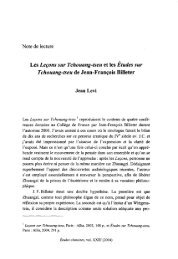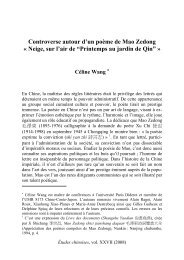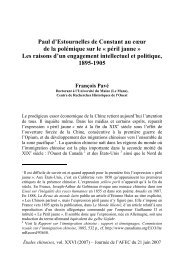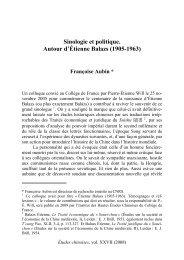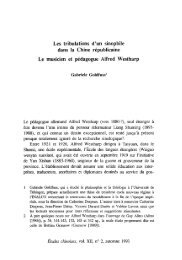Create successful ePaper yourself
Turn your PDF publications into a flip-book with our unique Google optimized e-Paper software.
Comptes rendus<br />
intégral part of Chinese impérial history, he also traces close to the sources<br />
the change in the évaluation of the earlier alien dynasties and their use for<br />
non-Chinese empirebuilding from Nurhaci to Hong Taiji - in a way until<br />
now not realized, by me at least. After mis article by Elliott, I am sure, we<br />
hâve to be still more careful in appraising the true degree of Chineseness<br />
or Manchuness of the Qing.<br />
Roger Des Forges looks at how the élite of the Central Plain coped<br />
with the Qing conquest. For them the Yuan pattern, the change from Song<br />
to Yuan, could not, in most cases, be acceptable. So, they delved deeper<br />
into Chinese history, to the Tang, the Han, and to Zhou to find other<br />
precedences and analogies which might facilitate reconciliation between<br />
the conquered and the conquerors.<br />
JaHyun Kim Haboush and Johan Elverskog try to tackle the same<br />
problem of accommodation from the fringes of the proper Chinese world,<br />
from the Korean and Mongol point of view. Kim Haboush enlarges with<br />
new évidence and enlightening insights our knowledge of the Korean<br />
attitude towards the Qing and the Koreans' rôle as lantern bearers of a<br />
genuine Chinese (Ming) orthodox tradition, while Elverskog shows how<br />
the Mongols as junior partners of the Manchus tried to keep up a Mongol<br />
tradition and time keeping, while being pushed more and more into a<br />
Tibetan Buddhist time scale under the Qing. His seems to me an important<br />
contribution. It makes us realize once more that the Mongol world was not<br />
a monolithic one and mat its move into the Manchu fold was slow and by<br />
many byways. Especially in connection with Elverskog's article - but also<br />
with the Eurasian part of Qing Formation - di Cosmo's and Dalizhabu<br />
Bao's volume can be used to advantage. Its very direct approach to history<br />
by presenting documents in mil with sparing annotations and a short interprétative<br />
introductory essay revives the early graduai incorporation into<br />
the nascent Manchu state accompanied by ever new irritations on the part<br />
of the Mongols in the period before the décisive defeat of the Caqar. If we<br />
look at the Mongol tribute missions and their présents we can use them to<br />
prove, how economically globalized the Mongol tribes were at that time.<br />
We can use the letters to find out about how - if at ail - they were dated,<br />
about the nuances in the use of the language, or from their content and<br />
474



